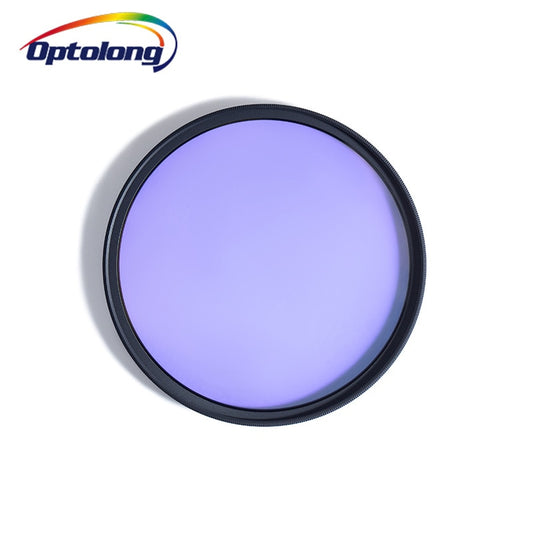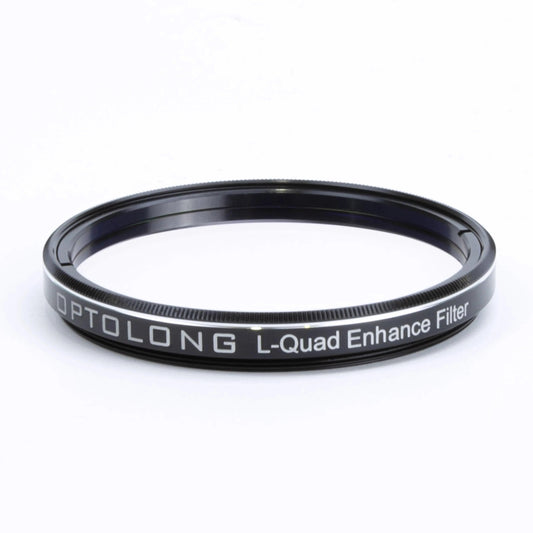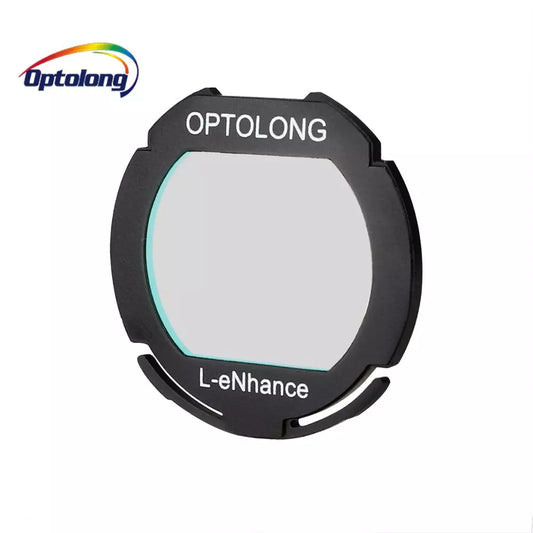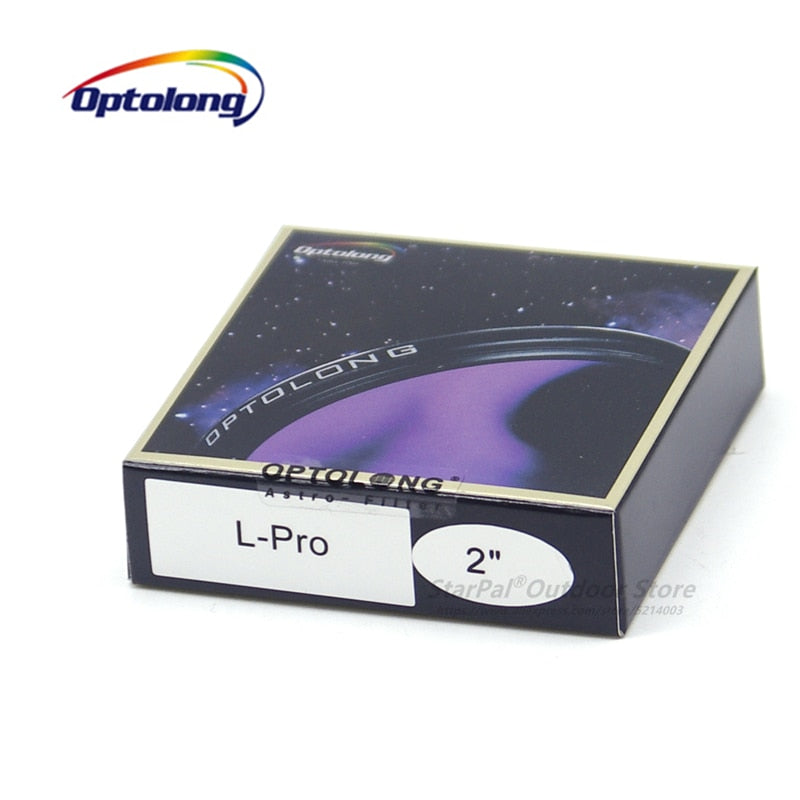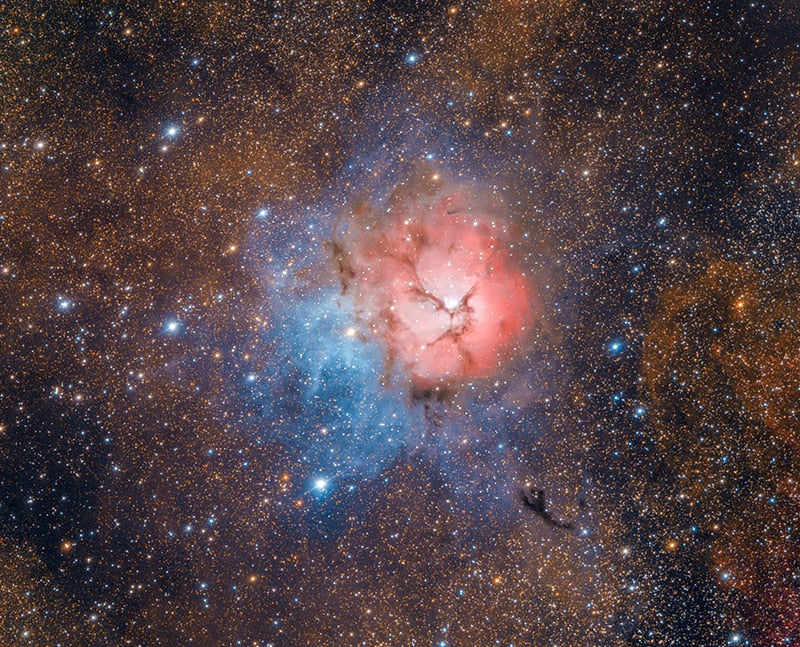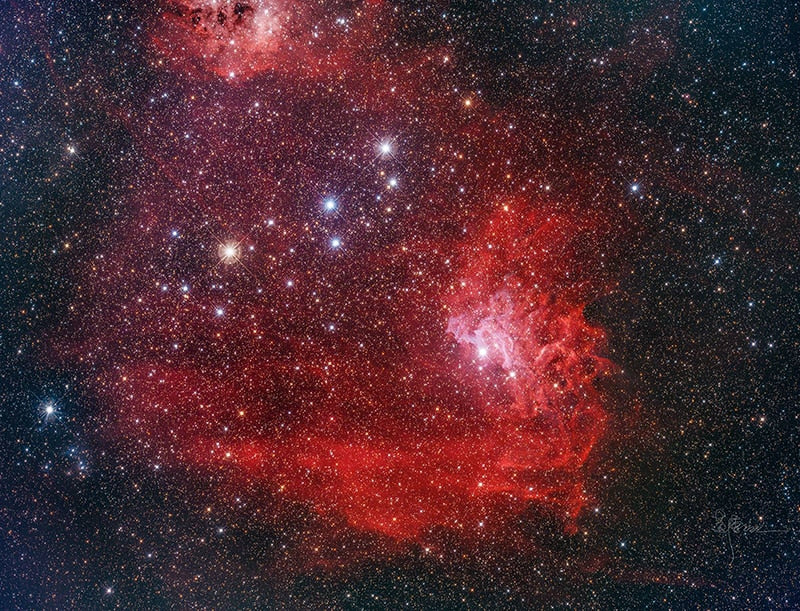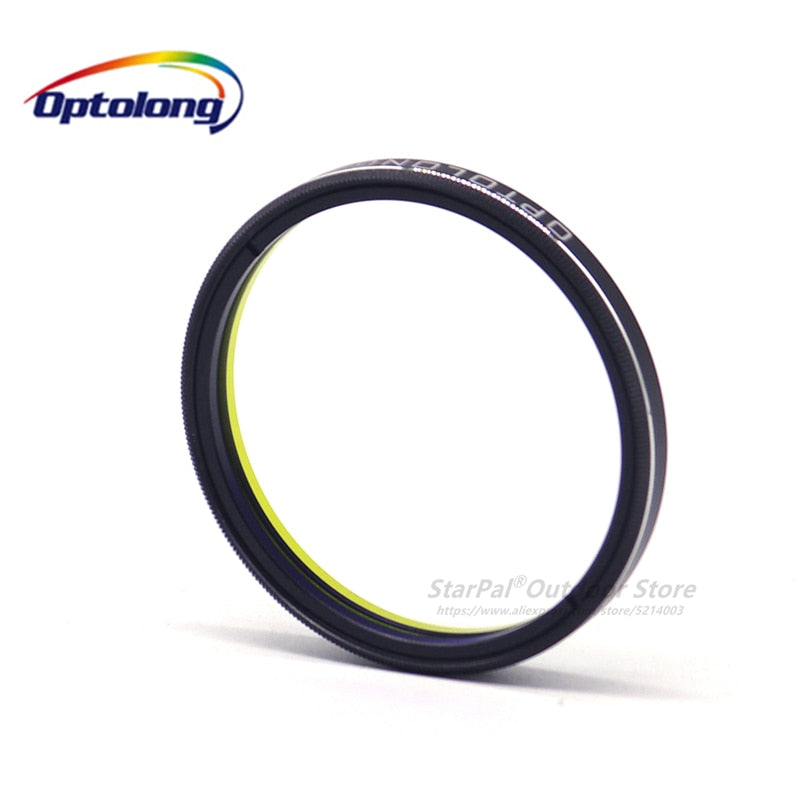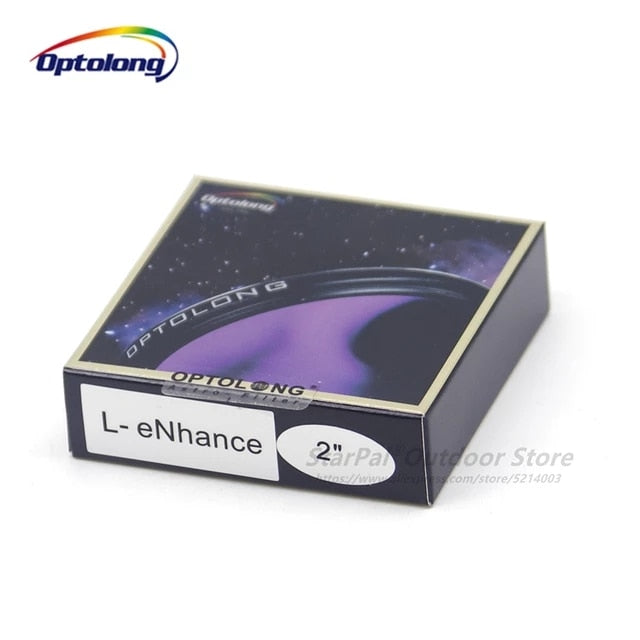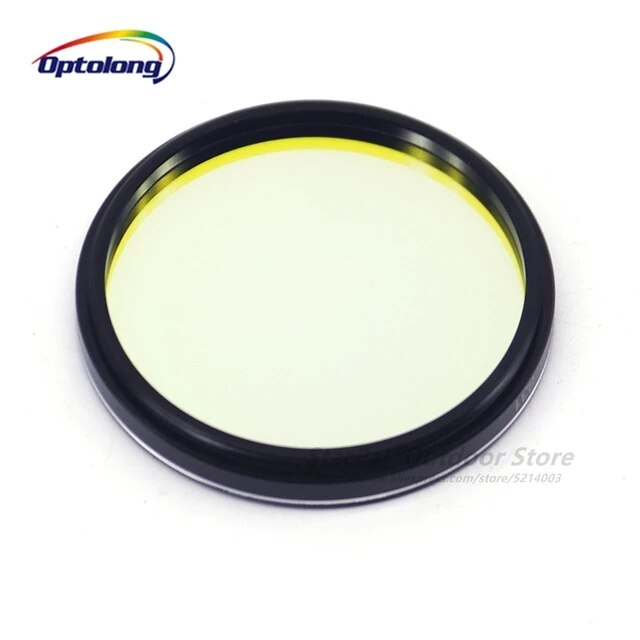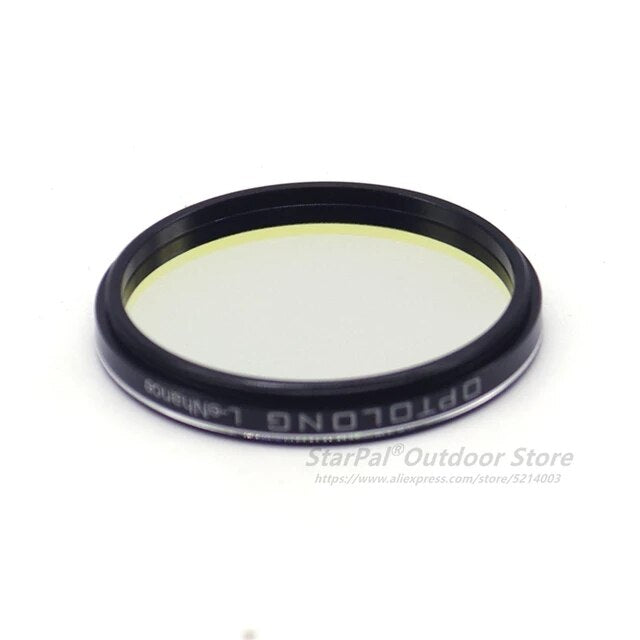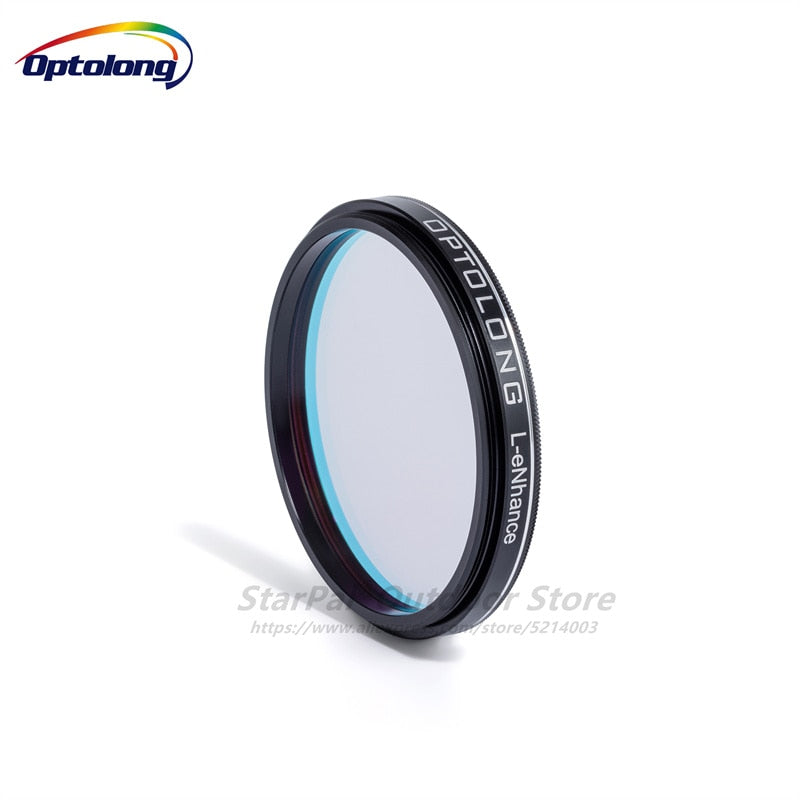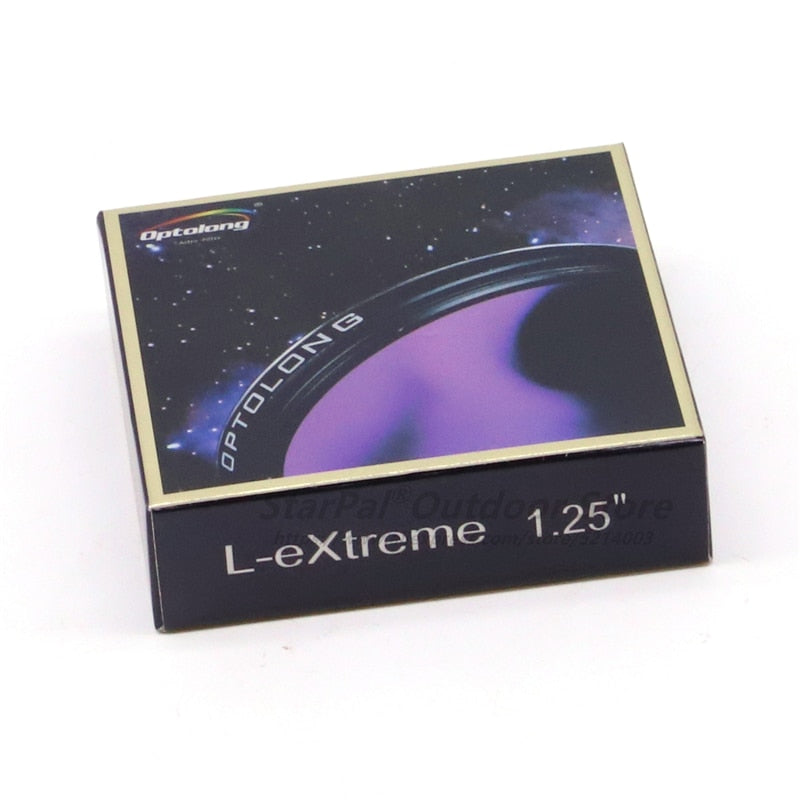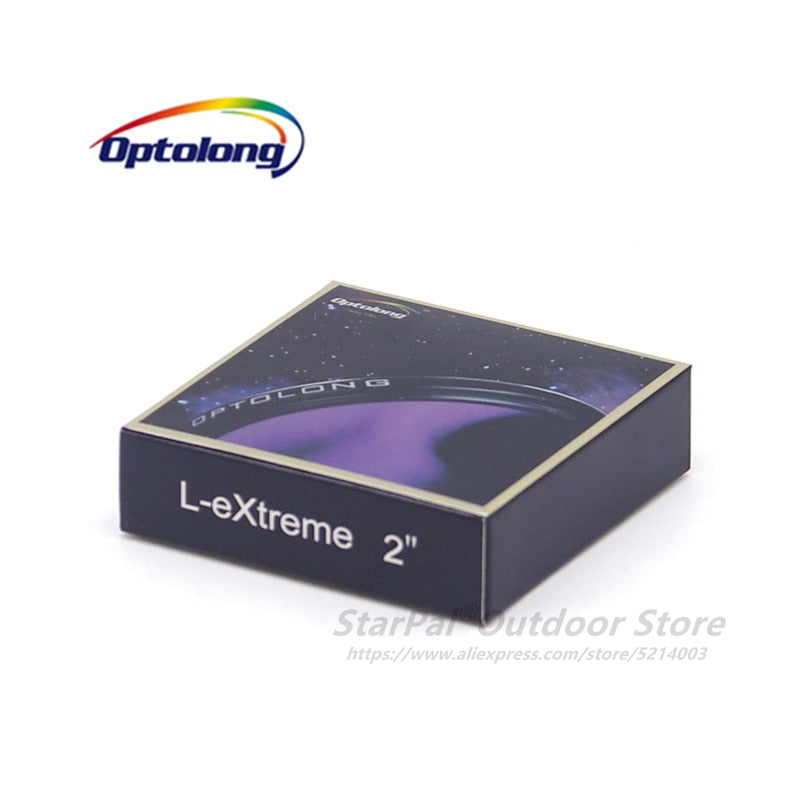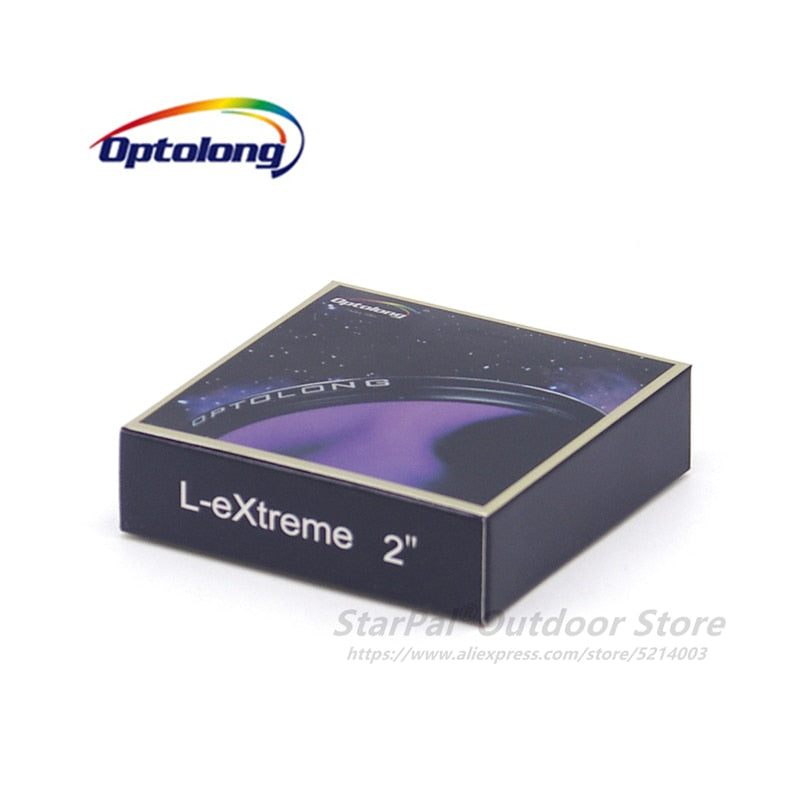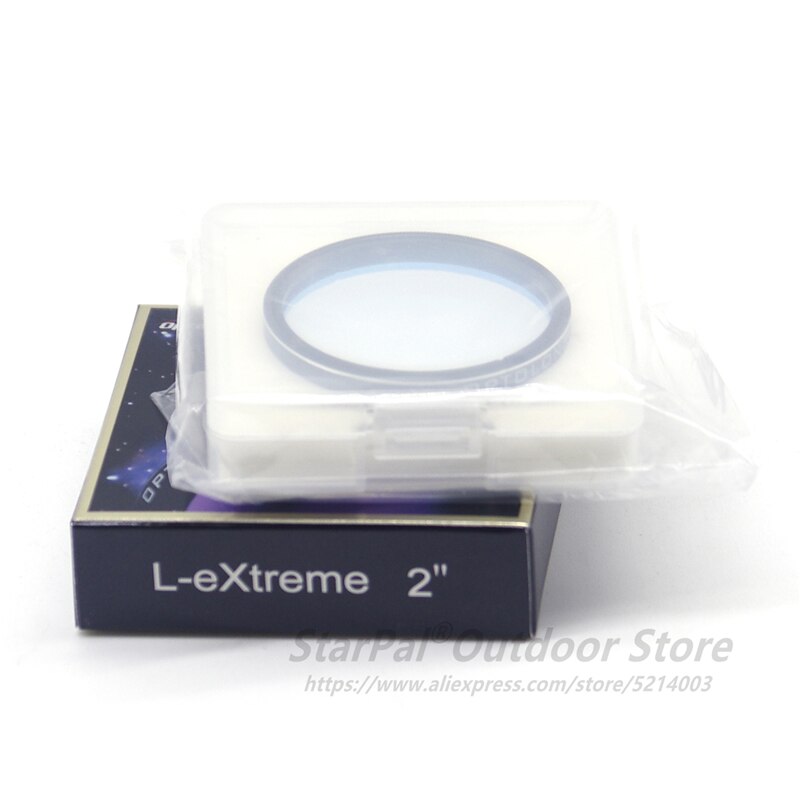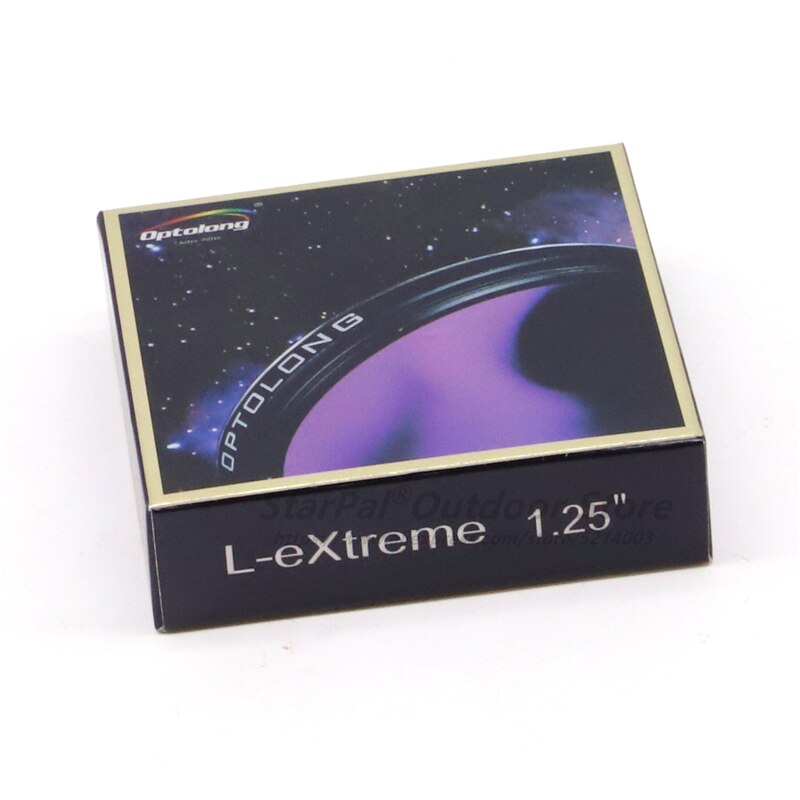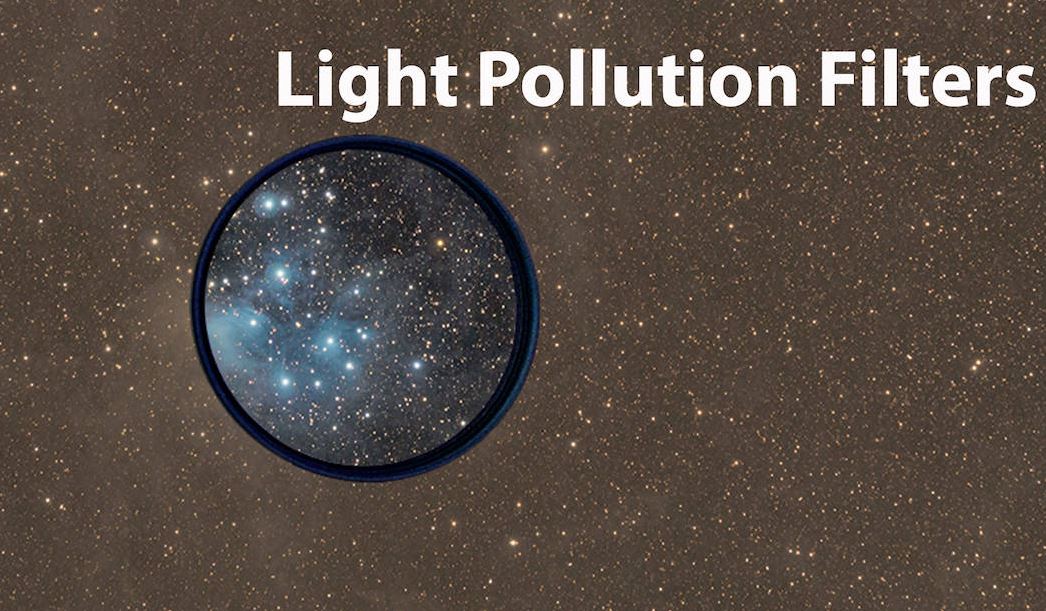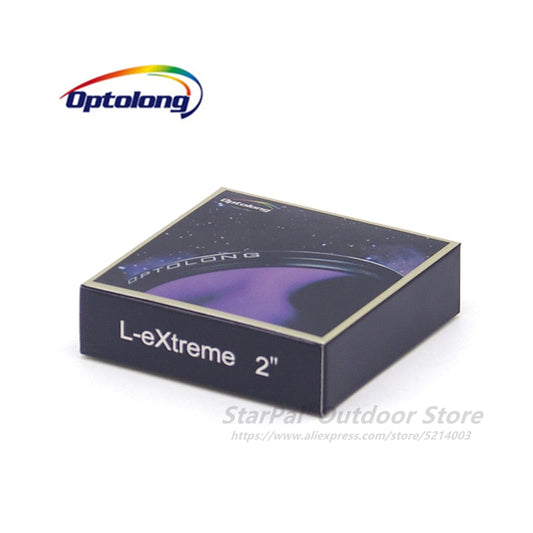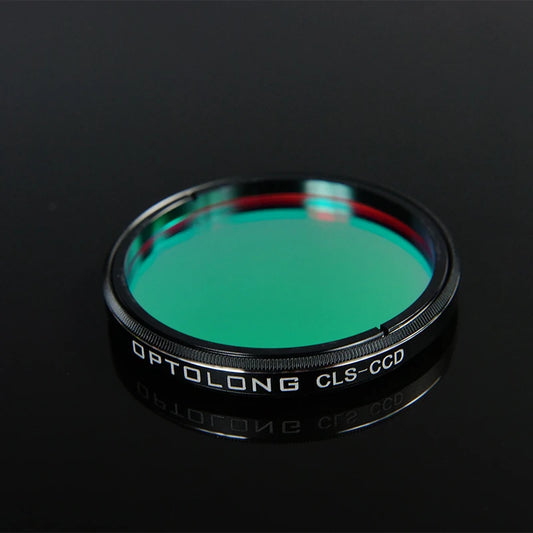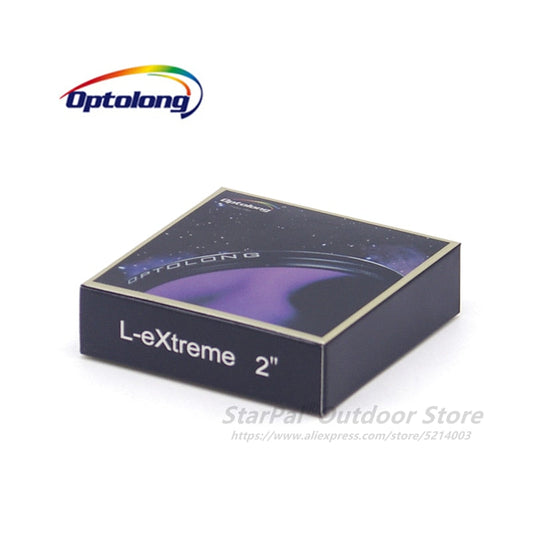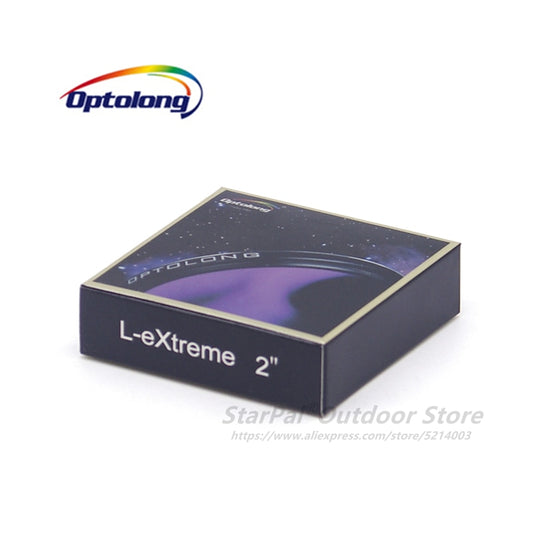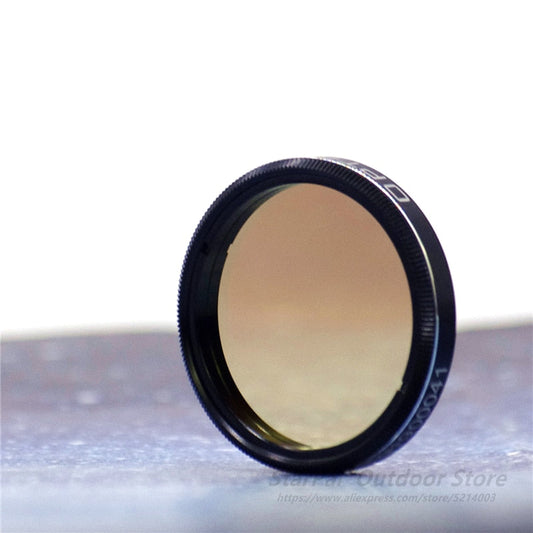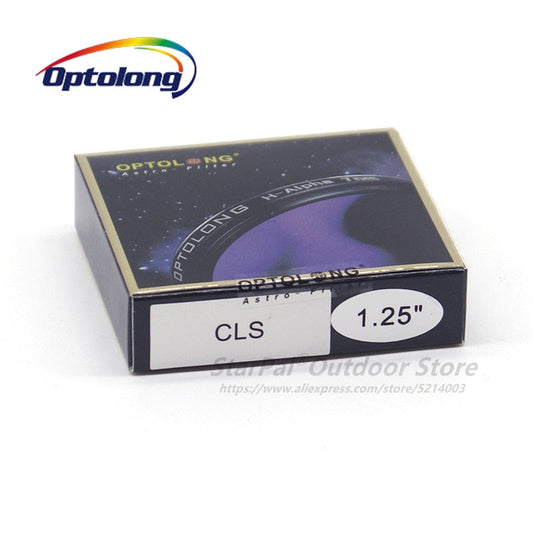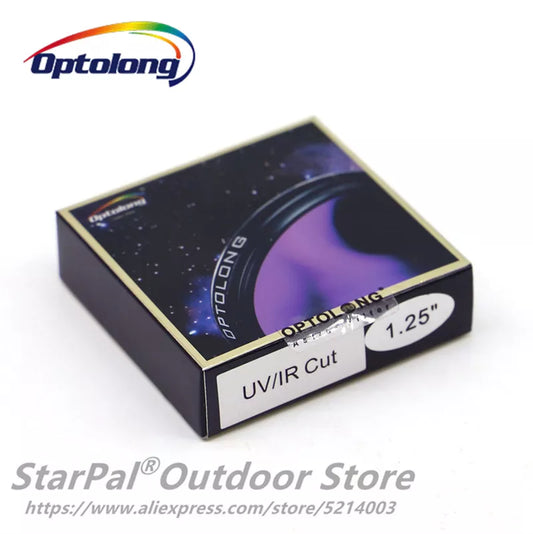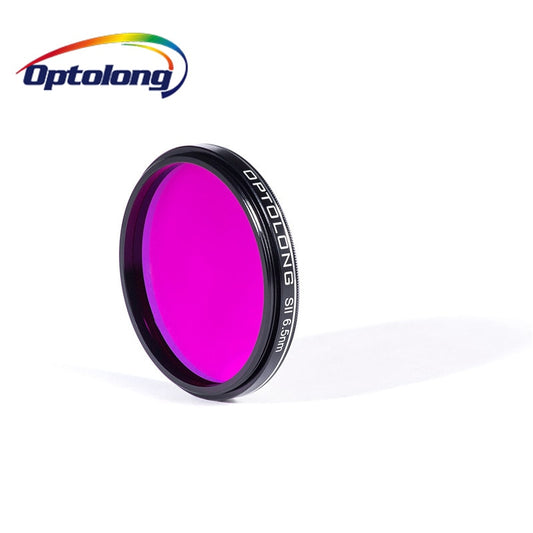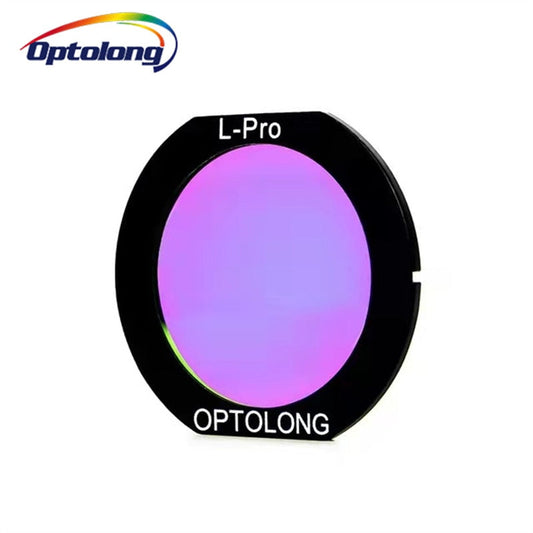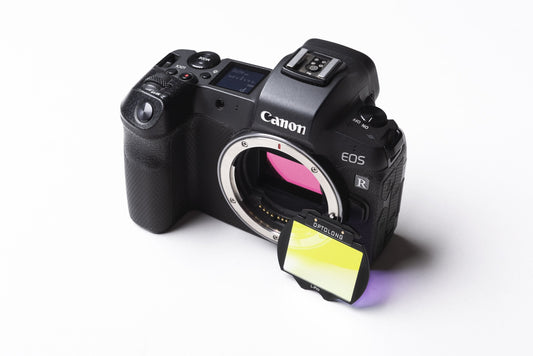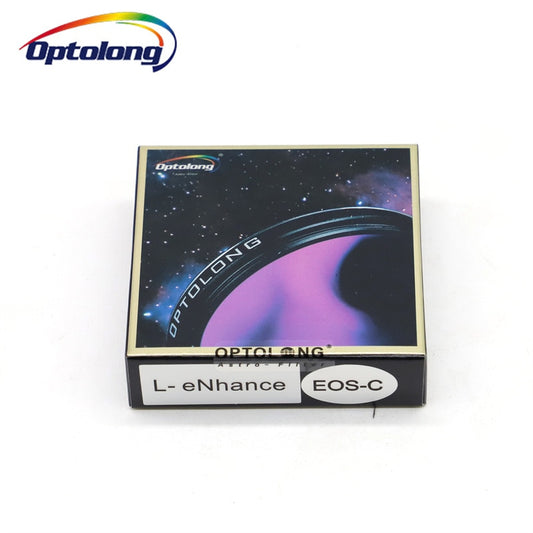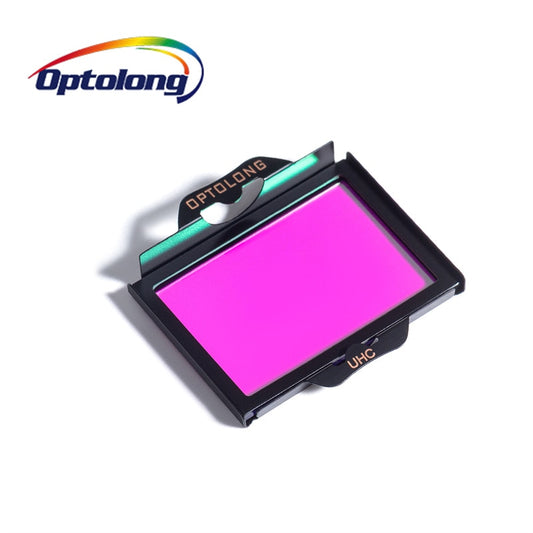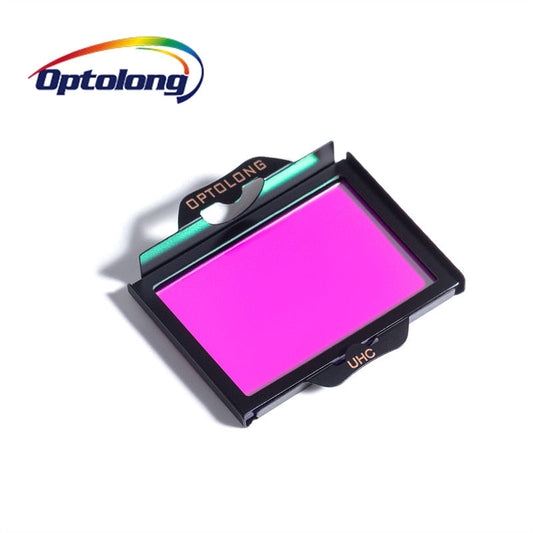Astrophotography is a popular hobby among photography enthusiasts. Capturing stunning images of the night sky requires specialized equipment and filters. Optolong is a leading manufacturer of astrophotography filters, and in this article, we will compare their L-Pro, L-Enhance, and L-Extreme filters.
Optolong L-Pro vs L-Enhance vs L-Extreme Filters
Here's a simplified breakdown of the main differences between the Optolong L-Pro, L-Enhance, and L-Extreme filters:
Optolong L-Pro Filter:
- Minimizes light pollution while maintaining natural colors.
- Ideal for urban and suburban astrophotography.
- Suited for imaging nebulae, galaxies, and star clusters.
- Balanced color rendition, suitable for RGB imaging.
- Cost-effective option for light-polluted areas.
Optolong L-Enhance Filter:
- Enhances contrast of specific emission lines (Hα and OIII).
- Targets emission nebulae, revealing intricate details.
- Versatile for moderate light pollution scenarios.
- Emphasizes emission details, suitable for both broadband and narrowband imaging.
- Captures vibrant nebulae colors while suppressing light pollution.
Optolong L-Extreme Filter:
- Designed for severe light pollution environments.
- Targets Hα, OIII, and SII emission lines.
- Suited for narrowband imaging of nebulae.
- Blocks most artificial light, capturing intricate details.
- Advanced choice for dedicated astrophotographers.
In short, the Optolong L-Pro is for minimizing light pollution while preserving natural colors, the Optolong L-Enhance enhances specific emission lines for vivid nebulae imaging, and the Optolong L-Extreme is designed for extreme light pollution conditions with its narrowband imaging capabilities. Your choice depends on your location, desired imaging results, and level of light pollution you encounter.
Optolong L-Pro vs L-Enhance vs L-Extreme Specifications
Here's a detailed specifications table that highlights the differences between the Optolong L-Pro, L-Enhance, and L-Extreme filters:
| Specification | Optolong L-Pro | Optolong L-Enhance | Optolong L-Extreme |
|---|---|---|---|
| Wavelength Range | Broad spectrum with light pollution reduction | Hα (656nm) and OIII (501nm) enhancement | Hα (656nm), OIII (501nm), SII (672nm) |
| Transmission | High transmission of key astrophotography wavelengths | Enhanced transmission for Hα and OIII lines | Enhanced transmission for Hα, OIII, and SII lines |
| Light Pollution Reduction | Yes, effectively reduces impact of artificial light | Moderate, focuses on specific emission lines | High, blocks most artificial light |
| Imaging Targets | Nebulae, galaxies, star clusters | Emission nebulae, capturing intricate details | Nebulae, targets Hα, OIII, and SII emission lines |
| Color Rendition | Balanced color rendition | Enhanced emission details and colors | Specialized for narrowband imaging |
| Filter Sizes | Available in various sizes for different systems | Available in various sizes for different systems | Available in various sizes for different systems |
| Optical Coatings | High-quality coatings for minimal reflections | High-quality coatings for optimal transmission | High-quality coatings for optimal transmission |
| Imaging Environments | Urban and suburban areas | Moderate light pollution scenarios | Severe light pollution environments |
| Workflow and Post-Processing | Less post-processing required | Enhanced color contrast, minimal post-processing | Focused on narrowband imaging workflow |
This comprehensive specifications table provides a detailed breakdown of the differences between the Optolong L-Pro, Optolong L-Enhance, and Optolong L-Extreme filters in terms of their wavelength range, transmission, light pollution reduction, imaging targets, color rendition, filter sizes, optical coatings, suitability for various imaging environments, and their impact on post-processing workflows. These specifications offer valuable insights for astronomers and astrophotographers looking to choose the most appropriate filter based on their specific astrophotography goals and the conditions they face.
Optolong L-Pro Filter
The Optolong L-Pro filter is a multi-bandpass filter designed for astrophotography in light-polluted areas. It features a combination of H-alpha, H-beta, and OIII filters, which selectively block out light pollution while allowing for the transmission of useful emission lines. The L-Pro filter also reduces the impact of thermal noise, making it an excellent choice for long-exposure imaging. It is compatible with both color and monochrome cameras and can be used with telescopes and camera lenses.
Designed as a broadband light pollution filter, the L-Pro offers a wide spectral range from 400nm to 700nm. This means it effectively reduces light pollution while allowing a broad spectrum of celestial objects to shine through. Capture stunning images even in areas with significant light pollution.
The Optolong L-Pro filter features a high transmission across the spectrum, ensuring optimal light gathering capabilities. Its multi-layer anti-reflective coating minimizes internal reflections, resulting in sharp and clear images. With a filter thickness of 2mm, it is durably constructed for long-lasting performance.
This versatile filter is compatible with DSLR and mirrorless cameras, as well as astronomical CCD cameras. It comes in standard sizes for popular camera models, ensuring easy integration into your existing setup. Whether you're an amateur or a seasoned astrophotographer, the Optolong L-Pro filter is an essential tool for capturing stunning images of the night sky.
Compared to other Optolong filters, the L-Pro stands out as a dedicated light pollution reduction solution. While the L-Enhance and L-Extreme filters target specific emission lines, the L-Pro provides a broader reduction of light pollution. Its spectral range allows for versatile astrophotography, making it an excellent choice for capturing a wide range of celestial objects in various lighting conditions.

Optolong L-Enhance Filter
The Optolong L-Enhance filter is a tri-bandpass filter designed for astrophotography in both light-polluted and dark areas. It features a combination of H-alpha, H-beta, and OIII filters and enhances the transmission of these emission lines while blocking out light pollution. The L-Enhance filter also improves the contrast of images, making it an excellent choice for capturing the beauty of the night sky. It is compatible with both color and monochrome cameras and can be used with telescopes and camera lenses.
Engineered as a narrowband light pollution filter, the L-Enhance is meticulously designed to capture stunning images of nebulae and star-forming regions. Its dual-bandpass configuration combines H-beta (486nm) and OIII (496nm and 501nm) filters, optimizing the transmission of these specific emission lines.
With enhanced transmission for its targeted wavelengths, the Optolong L-Enhance filter adeptly suppresses light pollution while allowing the desired nebular emissions to shine through. The result is breathtaking images with incredible contrast and rich detail, revealing the intricate structures and vibrant hues of celestial nebulae.
Compatible with both color and monochrome cameras, as well as telescopes and camera lenses, the L-Enhance filter offers versatility in your astrophotography endeavors. Its multi-layer anti-reflective coating ensures optimal light transmission while minimizing internal reflections. Crafted with a 2mm filter thickness, it boasts robust construction for reliable and consistent performance.
Distinguished from other Optolong filters, the L-Enhance stands out as a specialized tool for narrowband astrophotography. While the L-Pro addresses broadband light pollution reduction, the L-Enhance specifically targets the emission lines critical for capturing the allure of nebulae. As a result, it is the perfect choice for astrophotographers seeking to unlock the captivating beauty of nebulae while effectively combating light pollution.

Optolong L-Extreme Filter
The Optolong L-Extreme filter is a specialized filter designed for astrophotography in extremely light-polluted areas. It is a narrowband filter that blocks out most of the light pollution while allowing for the transmission of H-alpha and H-beta emission lines. The L-Extreme filter is ideal for capturing images of the night sky in urban areas where light pollution is severe. It is compatible with both color and monochrome cameras and can be used with telescopes and camera lenses.
With its tri-bandpass design, the L-Extreme filter targets the essential emission lines of H-alpha (656.3nm), OIII (501nm), and SII (672nm) with exceptional precision.
The Optolong L-Extreme filter boasts an extremely high transmission for these specific wavelengths, effectively blocking out unwanted light pollution while allowing the desired nebular emissions to shine through. This results in astoundingly clear and detailed images, revealing the intricate structures and vibrant colors of emission nebulae.
Compatible with both color and monochrome cameras, as well as telescopes and camera lenses, the L-Extreme filter empowers astrophotographers to capture the most elusive details of celestial objects. Its multi-layer anti-reflective coating ensures maximum light transmission and reduces internal reflections for superior image quality. With a filter thickness of 2mm, it offers robust durability and optimal performance.
When compared to other Optolong filters, the L-Extreme stands out as the pinnacle of ultra-narrowband light pollution control. While the L-Pro addresses broadband reduction and the L-Enhance focuses on narrowband nebulae imaging, the L-Extreme takes it to the next level with its ultra-narrowband capabilities. This filter is perfect for astrophotographers who seek to delve deep into the cosmos, capturing the mesmerizing details of emission nebulae with unrivaled clarity and contrast.

Applications and Imaging Targets
- The L-Pro filter is ideal for urban and suburban astrophotography, enhancing images of nebulae, galaxies, and star clusters.
- The L-Enhance filter excels in capturing emission nebulae, revealing hydrogen and oxygen details while mitigating light pollution.
- The L-Extreme filter is tailored for extreme light pollution scenarios, allowing the capture of nebular details with minimal interference from artificial light.
Color Balance and Workflow
- The L-Pro filter provides balanced color rendition, making it suitable for RGB imaging and minimizing post-processing efforts.
- The L-Enhance filter offers enhanced color contrast, allowing for vibrant and detailed images without excessive post-processing.
- The L-Extreme filter's unique design caters to narrowband imaging, capturing specific wavelengths with minimal interference.
Compatibility and Workflow
- All three filters, L-Pro, L-Enhance, and L-Extreme, are available in various sizes to fit a wide range of camera systems and telescope setups.
- They are designed to be parfocal, meaning you can easily switch between them without significant adjustments to your imaging setup.
- Their high-quality coatings and construction ensure minimal reflections and optimal light transmission, preserving the integrity of your images.
Target Audience and Expertise
- The L-Pro filter caters to beginners and experienced astrophotographers looking to improve their images in light-polluted areas.
- The L-Enhance filter appeals to those interested in capturing vivid emission nebulae details while handling moderate light pollution.
- The L-Extreme filter is best suited for advanced astrophotographers seeking to conquer challenging light pollution environments with narrowband imaging expertise.
Price Range and Investment
- The L-Pro filter offers a cost-effective solution for enhancing images in light-polluted regions without the need for specialized narrowband imaging.
- The L-Enhance filter provides a balance between enhanced emission details and affordability, making it versatile for various astrophotography projects.
- The L-Extreme filter is a premium choice, targeted at serious astrophotographers who prioritize capturing intricate details in extreme light pollution conditions.
Tips for Choosing the Right Filter
When selecting among the Optolong L-Pro, L-Enhance, and L-Extreme filters, consider these factors to make an informed decision:
- Light Pollution Level: Assess the light pollution in your area. If you're in an urban environment, the L-Extreme might be the best option. For moderate light pollution, the L-Enhance could be ideal, and the L-Pro is suitable for suburban or urban areas.
- Imaging Targets: Determine the types of celestial objects you want to capture. If you're into deep-sky imaging, nebulae, and galaxies, both the L-Enhance and L-Extreme are excellent choices. For a wider range of targets, including star clusters, the L-Pro might be more versatile.
- Budget and Investment: Consider your budget and the level of investment you're willing to make. The L-Pro is a cost-effective option, while the L-Extreme represents a premium investment.
- Imaging Expertise: Evaluate your experience level in astrophotography. The L-Extreme requires a certain level of expertise in narrowband imaging techniques due to its specialized nature.
- Post-Processing Preference: Consider your post-processing workflow. The L-Pro offers balanced colors, the L-Enhance emphasizes emission details, and the L-Extreme caters to narrowband enthusiasts.
Comparison
When it comes to choosing between the Optolong L-Pro, L-Enhance, and L-Extreme filters, it all comes down to your specific needs and shooting conditions. The L-Pro filter is an excellent choice for astrophotographers shooting in light-polluted areas who want to capture a broad range of emission lines. The L-Enhance filter is a versatile option that can be used in both light-polluted and dark areas and is perfect for enhancing the contrast of images. The L-Extreme filter is a specialized filter designed for astrophotography in extremely light-polluted areas and is ideal for capturing images in urban environments.
The Optolong L-Pro is a broadband light pollution filter, effectively reducing light pollution while allowing a wide spectral range of 400nm to 700nm to pass through. On the other hand, the Optolong L-Enhance is a narrowband filter designed specifically for nebulae and star-forming regions. Its dual-bandpass design targets H-beta and OIII emissions, enhancing contrast and detail. For those seeking ultra-narrowband capabilities, the Optolong L-Extreme is the ideal choice. This tri-bandpass filter hones in on H-alpha, OIII, and SII wavelengths, offering exceptional transmission and blocking out light pollution. Each filter is compatible with DSLR and mirrorless cameras, as well as telescopes and camera lenses, allowing versatility in astrophotography. Choosing the right filter depends on your specific goals and shooting conditions, whether it's reducing light pollution with the L-Pro, capturing nebulae with the L-Enhance, or diving deep into narrowband imaging with the L-Extreme. Elevate your astrophotography and unleash the full potential of the cosmos with the Optolong filter that suits your needs.

Optolong L Pro vs L Enhance vs L Extreme
Here's a detailed comparison table between the Optolong L-Pro, L-Enhance, and L-Extreme astrophotography filters:
| Feature | Optolong L-Pro | Optolong L-Enhance | Optolong L-Extreme |
|---|---|---|---|
| Purpose | Broadband light pollution filter | Narrowband light pollution filter | Ultra-narrowband light pollution filter |
| Spectral Range | 400nm - 700nm | 480nm - 520nm and 645nm - 675nm | 656.3nm (H-alpha), 501nm (OIII), 672nm (SII) |
| Transmission | High transmission across spectrum | Enhanced transmission for specific wavelengths | Extremely high transmission for specific wavelengths |
| Light Pollution | Effectively reduces light pollution | Specifically targets light pollution sources | Highly effective in blocking specific light pollution |
| Targets | Suitable for a wide range of astrophotography targets | Best for nebulae and star-forming regions | Ideal for emission nebulae and nebula filters |
| Filter Type | Dual-bandpass filter | Narrowband filter | Ultra-narrowband filter |
| Optical Coating | Multi-layer anti-reflective coating | Multi-layer anti-reflective coating | Multi-layer anti-reflective coating |
| Filter Thickness | 2mm | 2mm | 2mm |
| Filter Mounted | Available in standard sizes for popular camera models | Available in standard sizes for popular camera models | Available in standard sizes for popular camera models |
| Compatibility | Works with DSLR and mirrorless cameras, as well as astronomical CCD cameras | Compatible with DSLR and mirrorless cameras, as well as astronomical CCD cameras | Compatible with DSLR and mirrorless cameras, as well as astronomical CCD cameras |
| Price Range | Moderate | Moderate | Higher |
Conclusion
In conclusion, Optolong's L-Pro, L-Enhance, and L-Extreme filters are all excellent choices for astrophotography. The L-Pro filter is a multi-bandpass filter designed for shooting in light-polluted areas. The L-Enhance filter is a versatile option that can be used in both light-polluted and dark areas and enhances the contrast of images. The L-Extreme filter is a specialized filter designed for shooting in extremely light-polluted areas and is ideal for capturing images in urban environments. No matter which filter you choose, investing in one will help you capture stunning images of the night sky.
More Light Pollution and Filters Topics:
- What Filters do I need for Astrophotography
- Top 10 Best Filters for Astrophotography
- Hydrogen Alpha Filter
- Planetary Filters
- Solar Telescope Filters
- Best Filter for Galaxies
- ND Filter for Astrophotography
- Light Pollution Filters for Telescope
- Light Pollution Filter for DSLR
- Astrophotography Filter Drawer
- What Filter to use for Astrophotography
- How to put a Filter on a Telescope
- Best Light Pollution Filter for DSLR Astrophotography
- How does Light Pollution affect the visibility of Stars
- Light Pollution Definition
- Do Light Pollution Filters work
- Light Pollution Filter Astrophotography


